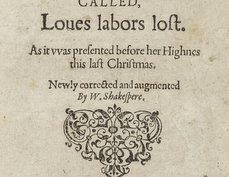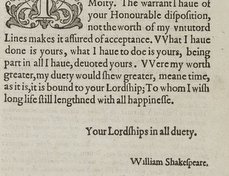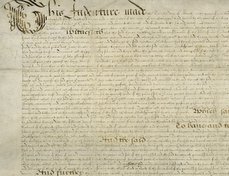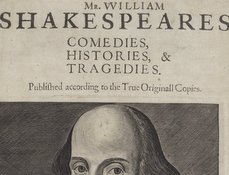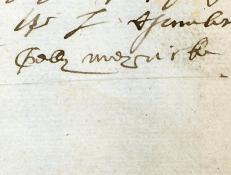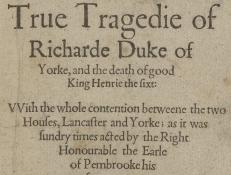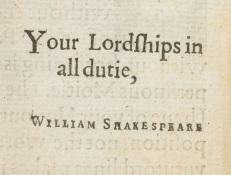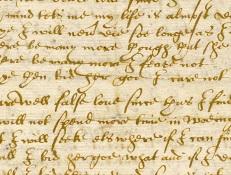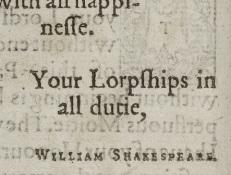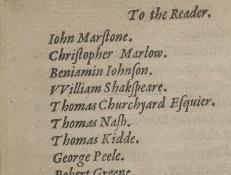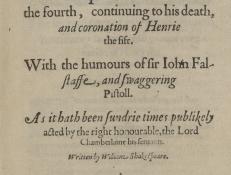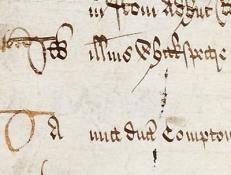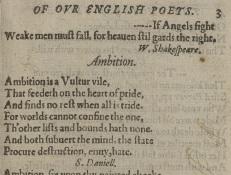Shakespeare Documented is still growing! Currently, two thirds of the descriptions and 98% of the images are available in the resource. Descriptive text will continue to be added, updated and expanded. Visit our About page to learn more about the project scope.
EXPLORE THE DOCUMENTS BY CATEGORY
SHAKESPEARE DOCUMENTED IS STILL GROWING
Descriptive content and transcriptions will continue to be added, updated and expanded. Check back for regular updates!
Filter the documents by tag(s)
1600
SHAKESPEARE DOCUMENTED IS STILL GROWING! Descriptive content and transcriptions will continue to be added, updated and expanded. Check back for regular updates!
February 17, 1600
In early 1601, Robert Devereux, Earl of Essex, led a rebellion which was over almost as soon as it began.
1600
This is the second edition of The True Tragedy of Richard Duke of York, now known as Shakespeare’s Henry VI Part 3.
1600
The fourth edition of Lucrece, dated 1600, was printed for John Harrison by his son, John Harrison III. It was set from the third edition, which was also has a 1600 imprint.
ca. 1600
SHAKESPEARE DOCUMENTED IS STILL GROWING! Descriptive content and transcriptions will continue to be added, updated and expanded. Check back for regular updates!
1600
The third edition of Lucrece was printed for John Harrison by his son, John Harrison III, in 1600.
1600
Like other plays from the period, Shakespeare's plays were meant to be read both as stories and as sources for sententiae, or memorable aphorisms.
1600
This is the first edition of Henry IV, Part 2, printed in 1600 by Valentine Simmes for Andrew Wise and William Aspley, who entered it into the Stationers’ Register on August 23, 1600, along with Much Ado About Nothing.
October 6, 1600
Lay subsidies were a type of tax based on personal wealth. In London, the collection of subsidies was managed at the local level of ward and parish.
1600
Englands Parnassus is one of two printed commonplace books, or collections of extracts organized by topic, compiled by Robert Allott, and was printed shortly after John Bodenham’s Bel-vedére.

